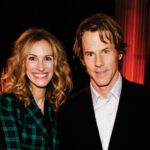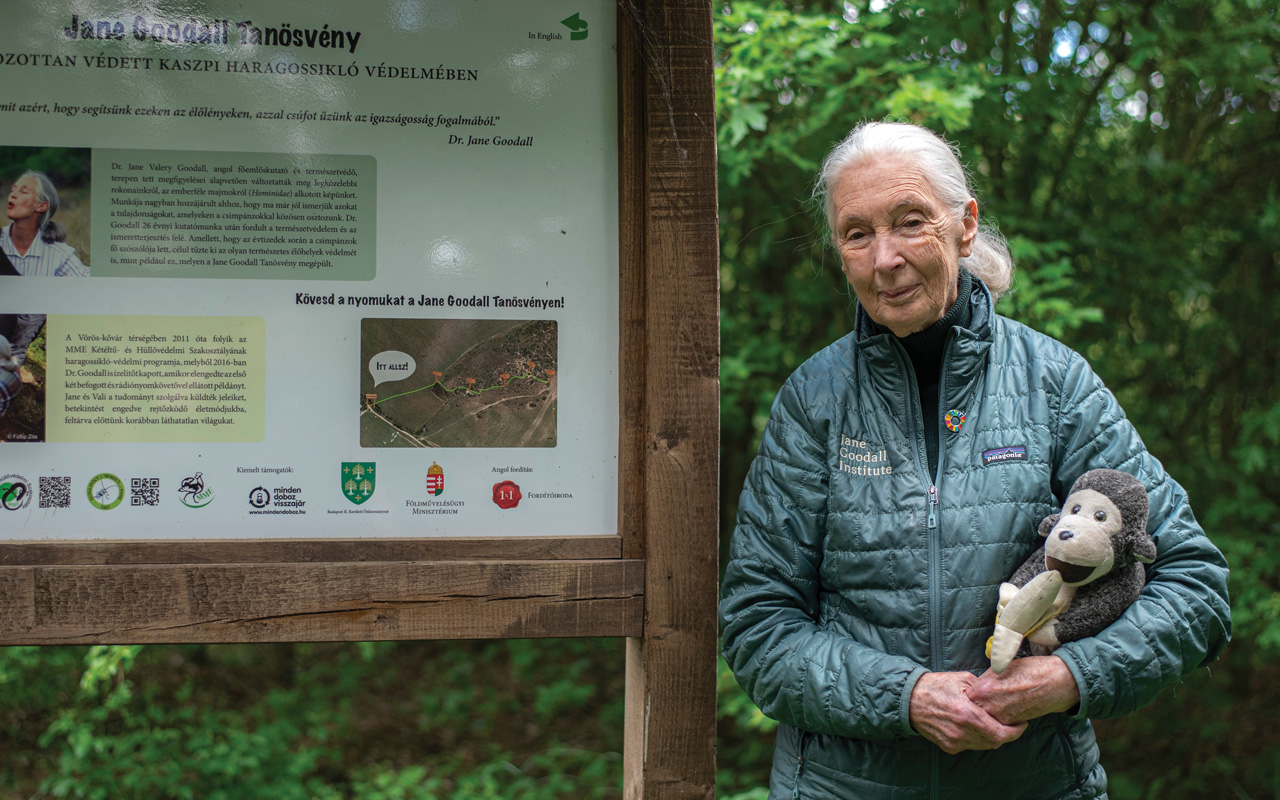
Dr. Jane Goodall with Mr. H at the Jane Goodall Nature Trail inBudapest, Hungary
There’s a palpable buoyancy to 2024. We’ve survived some challenging times, and the more I converse with younger people, the more I’m convinced that we will move forward with a greater awareness of the ramifications of our actions. There’s also an earnest desire amongst the millennials and Gen Z’s to engage in work about which they are truly passionately invested.
One of the most remarkable people of both the twentieth and twenty first centuries is Dr. Jane Goodall, who is admired and respected in every corner of the world – no matter the nationality or ethnicity. This unassuming, petite woman has spent her entire life pursuing her passion – gathering vital information about our closest relatives, and opening our eyes to the magnificent interconnectedness of all species and the habitat we all share on planet earth.
The Early Years
As a child, Jane Goodall had a natural love for the outdoors and animals. She had a much-loved dog, Rusty, a pony, and a tortoise, to name a few of their family pets. When Jane was about eight, she read the ‘Tarzan’ and ‘Dr. Dolittle’ series and, already in love with Africa, she dreamed of traveling to that continent to work with the animals featured in her favorite books.
Jane Goes to Africa
In 1960, aged 26, equipped with little more than a notebook, binoculars and her khaki shorts and shirt, Jane Goodall braved a realm of unknowns by venturing by boat into Gombe Stream Game Reserve in Tanzania (on the eastern shore of Lake Tanganyika) – focused on her fascination and love for wildlife. That journey to Africa 64 years ago required a level of bravery that few people possess.
The early weeks at Gombe were challenging. Jane developed a severe fever (likely malaria) that delayed the start of her work. Once recovered, the rugged terrain and thick vegetation made traversing the reserve a challenge and often she hiked miles without seeing a chimpanzee. Driven by her passion, she was determined to give the world a remarkable new window into humankind’s closest living relatives.
A New Kind of Scientific Research
At the time, the world knew very little about chimpanzees, and even less about their unique genetic kinship to humans. Jane took an unorthodox approach in her field research, immersing herself in their habitat and their lives to experience their complex society as a neighbor rather than a distant observer. Her first substantial contact was with an older, wise chimpanzee named David Greybeard. Later, she formed a close bond with a baby chimpanzee named Flint. She came to understand the chimpanzees not only as a species, but also as individuals with emotions and long-term bonds. Her discovery that chimpanzees make and use tools is considered one of the greatest achievements of twentieth-century scholarship. Her field research at Gombe transformed our understanding of chimpanzees and redefined the relationship between humans and animals in ways that continue to emanate around the world. Jane describes those early days like this:
“A sense of deep calm came over me. More and more often, I found myself thinking, this is where I belong. This is what I came into the world to do.”
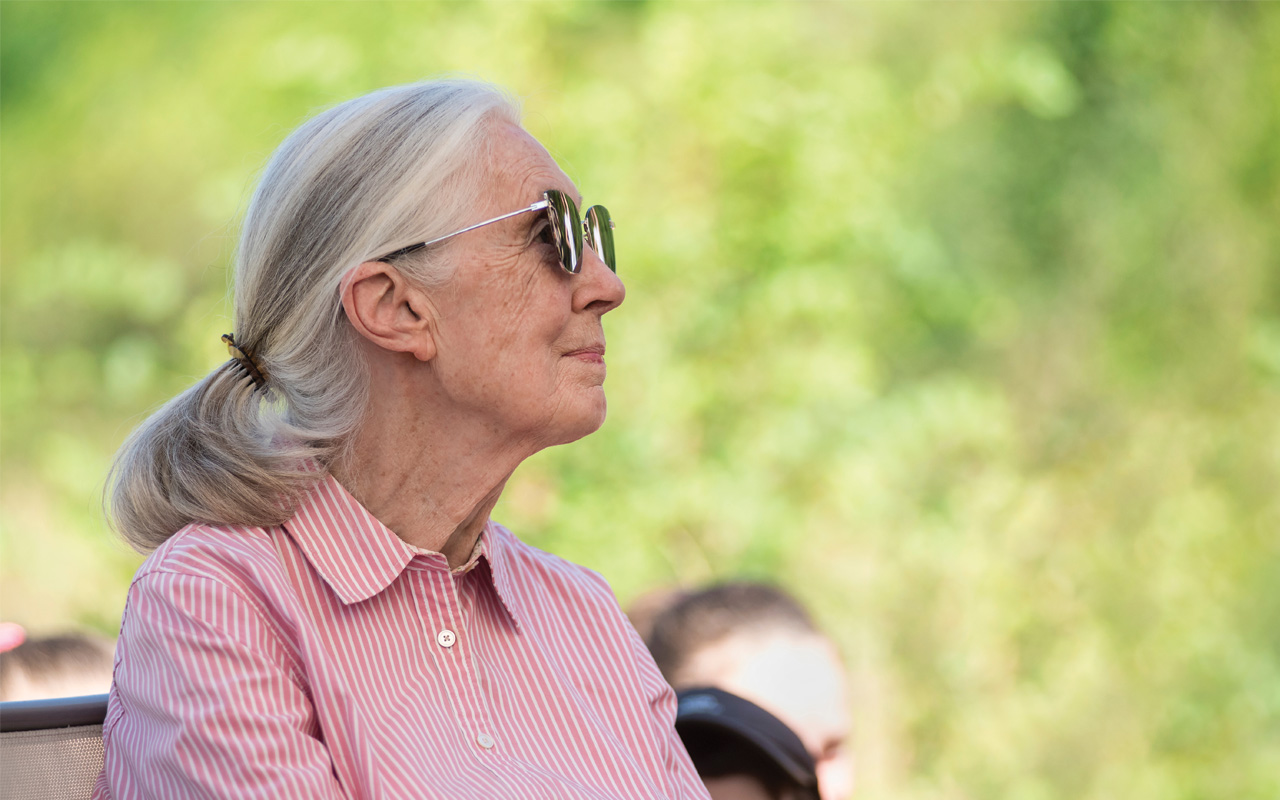
Jane Goodall speaks in Sashegy, Budapest
How to Make Conservation Work
Through 64 years of groundbreaking work, she has not only shown us the urgent need to protect chimpanzees from extinction; she has also redefined species conservation to include the needs of local people and the environment.
Jane shifted from scientist to conservationist and activist after attending a primatology conference in 1986, where she noticed all the presenters mentioned deforestation at their study sites worldwide. She had noticed some signs of deforestation along Lake Tanganyika at Gombe Stream National Park, but nothing significant. Then, in the early 1990s, she flew in a small plane over the park and was shocked to see large-scale deforestation on the other side of the park where local villages were rapidly expanding. Miles of bare hills stretched where once untouched forests had stood. Jane knew that she had to take action to protect the forest and preserve the critical habitat of the chimpanzees.
When she discovered that the survival of the chimpanzees was threatened by habitat destruction and illegal trafficking, she developed a breakthrough approach to species conservation that improves the lives of people, animals and the environment by honoring their connectedness to each other. In 1977, she founded the Jane Goodall Institute to ensure that her vision and life’s work continue to mobilize the collective power of individual action to save the natural world we all share.
She famously said, “Change happens by listening and then starting a dialogue with the people who are doing something you don’t believe is right.”
In 1991, the Jane Goodall Institute started up a tributary program called Roots & Shoots, which encourages young people around the world to be agents of change by participating in projects that protect the environment, wildlife, or their communities. Jane met with anyone she felt could be key to protecting places like Gombe Stream National Park and has been an advocate for protecting animals, spreading peace, and living in harmony with the environment.
Jane is still hard at work today – raising awareness and building resources to protect the chimpanzees, their habitats, and the planet we all share. She travels about 300 days a year giving speeches, talking to government officials and business people around the world, encouraging them to support wildlife conservation and protect critical habitats. She speaks about the threats facing chimpanzees and environmental crises, urging each of us to take action on behalf of all living things and the planet we share.
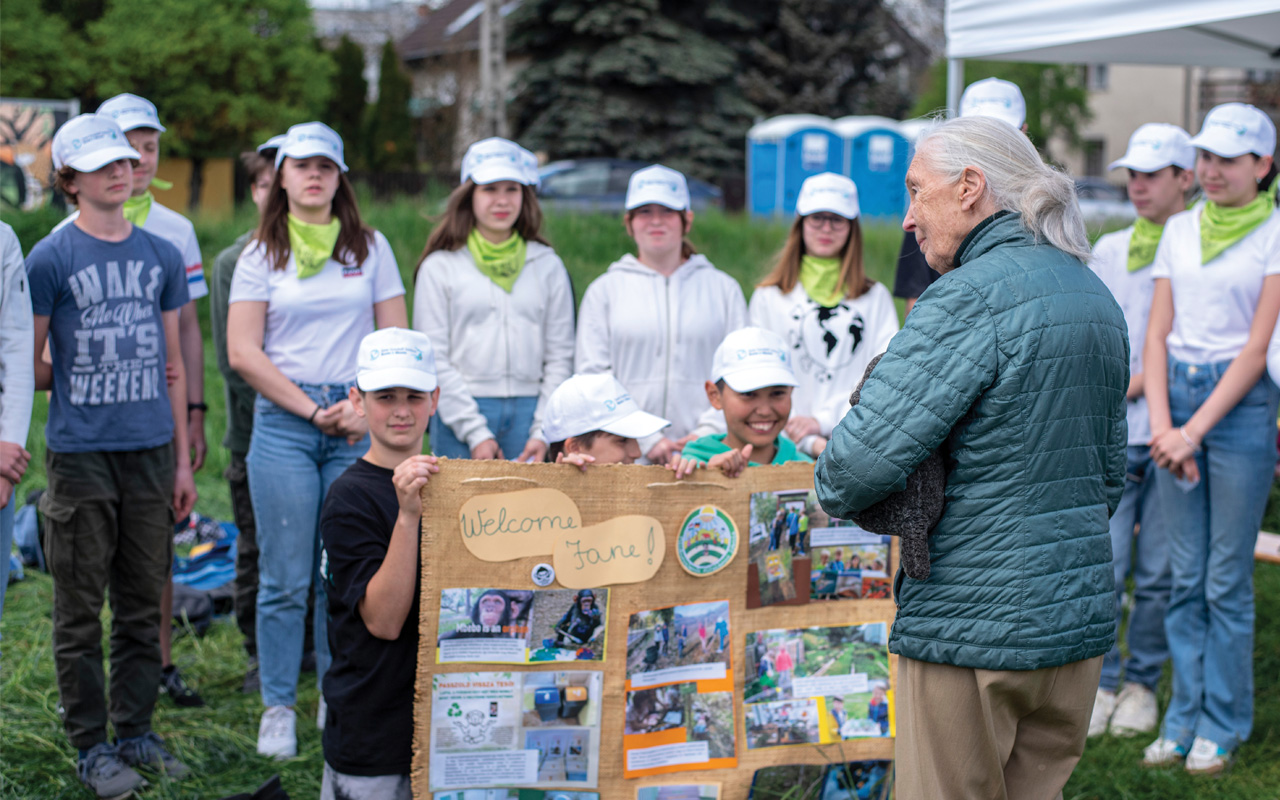
Dr. Jane Goodall receives a Roots and Shoots presentation
The Peacemaker
Jane Goodall’s life’s accomplishments are immense. Even the most hardened cynics would be devoid of an argument if they attempted to minimize her massive contributions to this world. We all know that she’s a world-respected scientist and conservationist, but I want to home in on one of her equally important characteristics. Jane is a peacemaker – above everything. It is her mentorship in peacemaking that will have the longest-lasting and most powerful effects on planet earth. Humans get caught up in their egos and their power trips. What Jane Goodall has consistently shown us through her gentleness, her sensitivity, her acute listening skills, and her rational observations, is that our success as a human race is dependent on our levels of cooperation with each other. If we label people as enemies and if we don’t engage in constructive dialogue with one another because of our varying viewpoints, we will invite disastrous consequences.
Jane has often described how deeply saddened she becomes when watching chimpanzees revert to aggressive, barbaric behavior which is motivated by malice, anger, power and greed. The same behavior is evident in humans. It starts with body posturing, aggressive words, and then volatile behavior that can result in terrible violence and destruction.
This world-respected scientist, conservationist, peacemaker, and mentor has shown us the power of communicating irrefutable facts in such a congenial manner that audiences are drawn to the purity of her intention. That is what compels us to listen – whether we know it or not. Jane Goodall’s calling has been her life’s work, and it has played a vital role in our understanding of the inter-connectedness of all living creatures with our shared habitats.
As we celebrate the 90th birthday of this astoundingly giant woman, may we all work together collectively towards a healthier, more sustainable future.
Acknowledgements: nationalgeographic.org
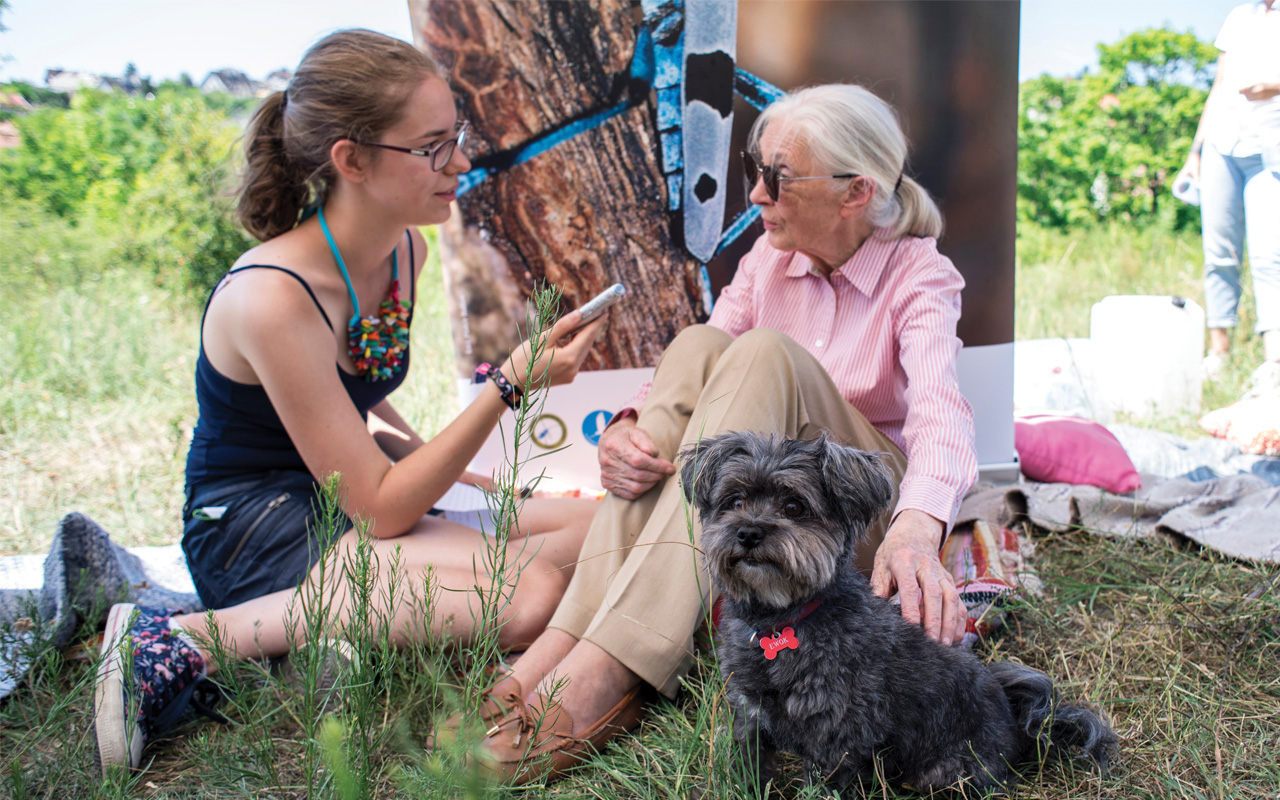
Young people in Budapest Hungary gain wisdom from Jane Goodall. Aug 09, 2019



